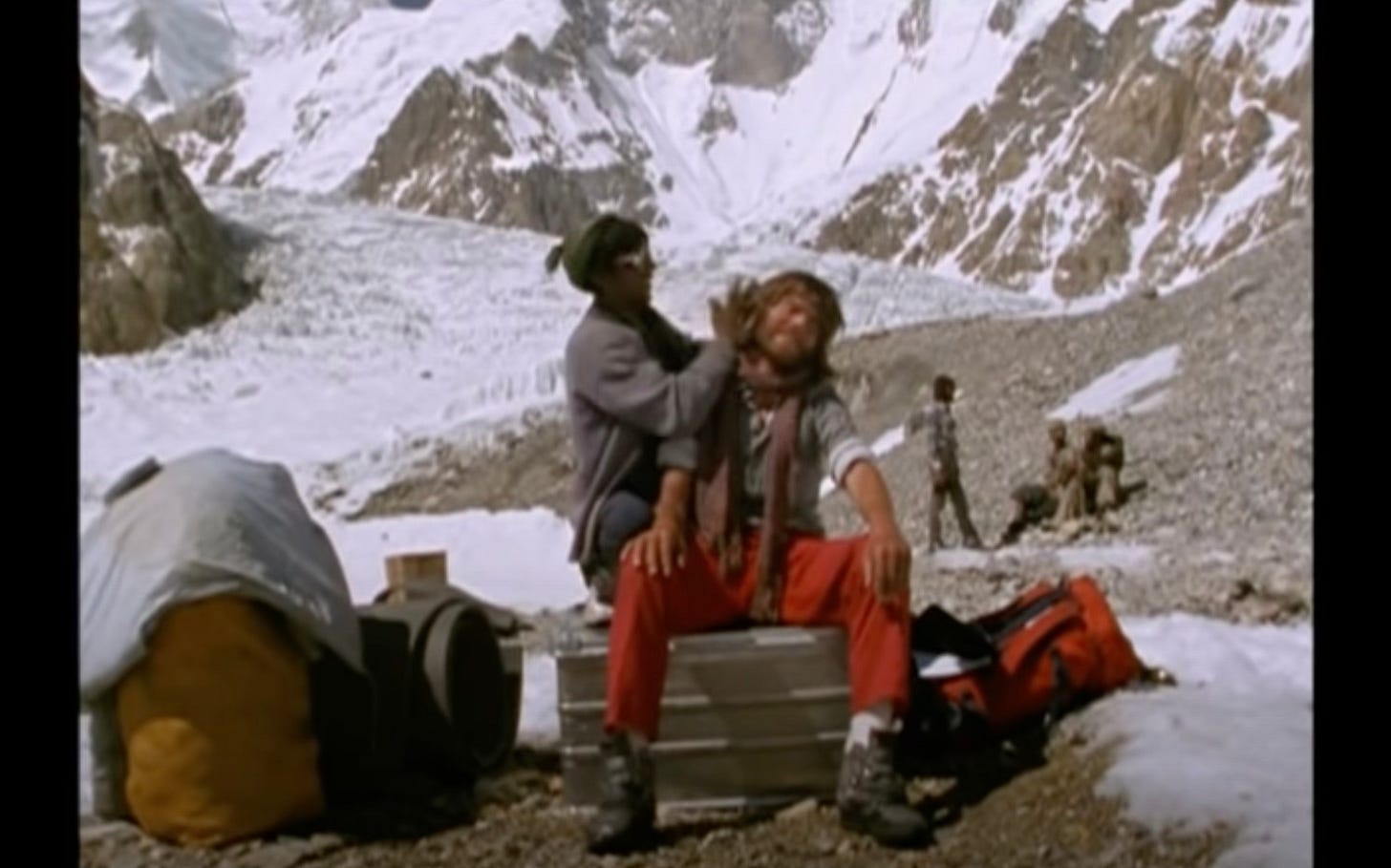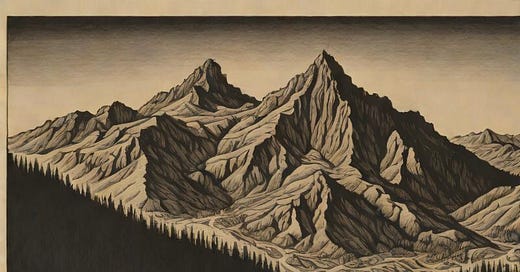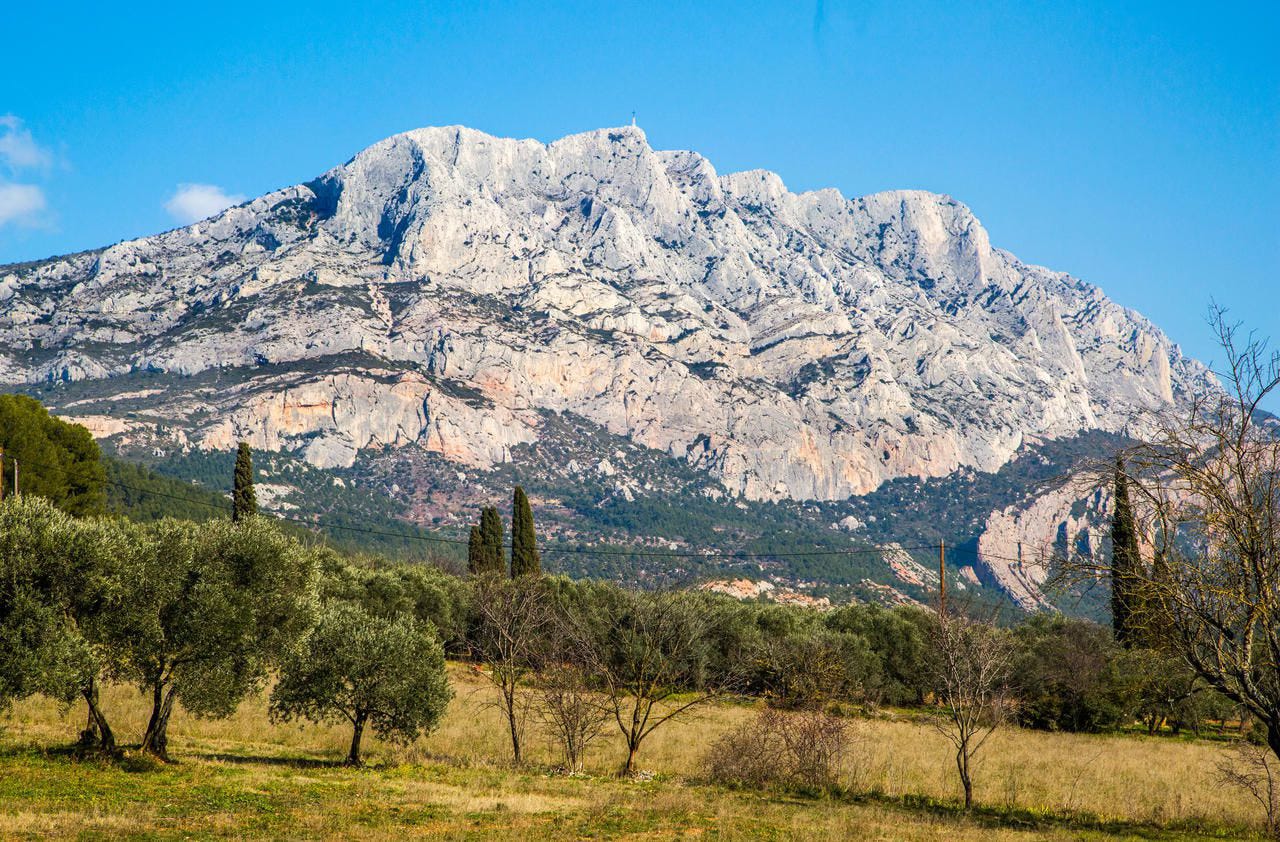Mountainscapes : What Sounds Do Mountains Make?
What lurks and creaks beneath the surface of those magnificent peaks...
From a human perspective, mountains stand stoic and still, massive symbols of quiet endurance and immovability.
But new research reveals that mountains are, in fact, moving all the time, swaying gently from the seismic rhythms coursing through the earth upon which they rest.
— Richard Sima : Mountains Sway to the Seismic Song of Earth (Eos.org)
"Like wind, far away, but with a depth like a rumbling of the earth."
The Sound of the Mountain - according to Shingo Ogata - the protagonist from Yasunari Kawabata’s novel of the same name, recounting his experience of hearing this mysterious sound as he lays awake in bed at night.
Terrified by its foreboding nature, the sound overwhelms him…
“He wanted to question himself, calmly and deliberately, to ask whether it had been the sound of the wind, the sound of the sea, or a sound in his ears. But he had heard no such sound, he was sure. He had heard the mountain.”
Mountains.
They come in all shapes and sizes.
Their myths and legends even more diverse than the civilisations and cultures that have personified, revered, worshipped and feared them across the millennia.
I myself have fallen prey to the influence of their great lure, their powerful mysticism. This fascination of the mountains came to me as I entered my third decade on Earth. Growing up for the most part of my life before that in London, mountains were not something that I had much experience with, nor encountered often.
Recently, I watched Werner Herzog's wonderful documentary following Reinhold Messner & Hans Kammelander — two Italian mountaineers — on their daunting double climb of Gasherbrum I & II on the borders of Pakistan and China.
“The fascination has been inside me for a long time. The fascination is altitude… but I can’t answer the question of why I do it, just as I can’t say why I live. And I never asked myself the question whilst I was climbing. The question just doesn’t exist then because my entire being is the answer.” - Reinhold Messner

Whilst I don’t claim to match Messner’s passion for ascending and conquering eight-thousand metre mountains (at least not yet…), I can wholly connect with his fascination for the mountain as reflected in these words.
Beyond the truth in Messner’s words I was drawn to something else…
Something that resonated even deeper.
It was the sounds of the mountain I was hearing in the background.
For a TV documentary filmed in the mid 80’s, it would certainly have been no mean feat to attempt to capture sound in such a remote location as the Karakorum mountain range at an altitude of five thousand meters, where the base camp for most of the filming took place.
Watching this film back on YouTube - snug in my studio with the comfort of a good pair of headphones - there was something so brute, so compelling and natural about the sounds I was hearing. The roaring, rushing rapids, the howling, whistling winds, the crunchy, cracking footsteps — all conveying the character of the mountain with such clarity.
And so it was that my growing interest in mountaineering became intertwined eventually with my devotion to sound. Now, each time I plan an expedition to climb, one of the first thoughts I have regarding my itinerary involves which microphones to pack, or how I can pre-empt conditions in order to scope out good recording spots.
But how can one possibly record an object so big - so massive? Do mountains even make sounds? Reading
’s thoughts on recording in the wild, he makes a very good point —That which I would have previously registered as single, discrete entities such as “bird”, “wave”, “rain” became implicated in a choreography of matter and vibration. There were no outcomes, no finished forms, just physical processes, constantly repeating, never the same. This attentive, augmented listening - because in a sense a recorder is like a magnifying glass - was peeling away the static surface of the world as I had previously known it, to reveal the movement beneath.
taken from his post Learning to listen beyond music
I’ve been working on the creation of a sound piece that explores the sounds of one mountain in particular - the Sainte Victoire (pictured above).
Since relocating to Aix-en-Provence in 2020, I have made several climbs of this very humble giant. Standing at just over a thousand meters tall - it’s certainly no Himalayan beast - but it has welcomed me, my microphones and my wandering soul as I seek to discover the hidden sounds to be found within the mountain.
Take a listen to this…
This is an extract taken from a work in progress titled “If Mountains Had Ears”.
Composed using field recordings made from several climbs of the Sainte Victoire mountain, I have been exploring the concept of the “mountainscape” — sculpting a structure from the perspective of the mountain that seeks to explore subterranean sound, conjuring a recipe of rumbles, groans, creaks and frequencies under the layers of rock, crust and core to reveal a dense, living organism — an attempt at personifying the mountain.
Then, in preparing this latest feature, I was astounded to come across this recording…
It was made by Jeffrey Moore, a geologist at the University of Utah and senior author of the study “Spectral amplification of ground motion linked to resonance of large-scale mountain landforms”. Moore and his team of researchers set out on an expedition to monitor seismic energy levels and record ambient vibration data at the summit of the Matterhorn in Switzerland.
*Note that this recording has been sped up 80 times to arrive within the audible range of human hearing.
“It’s kind of a true song of the mountain. It’s just humming with this energy, and it’s very low frequency; we can’t feel it, we can’t hear it. It’s a tone of the Earth.”
Jeffrey Moore
I was astounded to discover the similarity of these two soundscapes!!
It’s a rare and wonderful thing when creative imagination and objective reality overlap.
Working with field recordings as a medium for creating soundscapes is a fascinating challenge. The terrain is wide open. It’s a unique way of telling a story, sharing an experience that is crafted from one’s own interpretation and connection with a place.
That I could create my own abstract interpretation, articulating a reality that shares a similar sonic profile to that which can be heard as occurring physically in the natural world — this left something of a mystical wisp on my trail.
Something strangely far but familiar…
Almost like a déjà vu experience…
I’ve since set myself a date to go to Matterhorn this year to continue my creative research and further explore the soundscapes of mountains. I want to understand more about seismic energy and how to interpret and manipulate it into form through sound recording.
I’m fairly certain I won’t attempt to climb the full four thousand four hundred and seventy-eight metres to the summit… but you never know…

Sonic Tapestries will remain free to all subscribers.
Your kind support helps me to grow my audience and continue on my creative path.
If you do like reading along and want to help support my work further, please consider sharing this post with your friends, family and followers.
Thank you for being here with me.
Mat
🌻








Fascinating read and great to hear these recordings, thank you. If everyone was like me then mountains would have remained completely unexplored!
This resonates deeply. That Werner Herzog movie is one of faves as well. Watched it a few years back on the train, on may way home from a three-week hike through the Alps. I noticed those sounds as well.
The Matterhorn indeed is a mountaineers dream. Hope to read here about your experiences there, Mat.